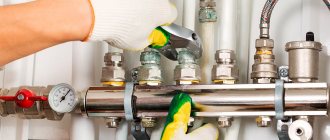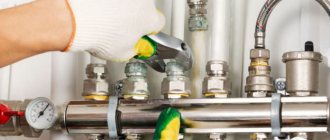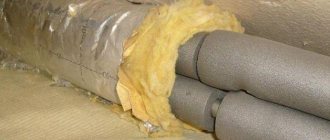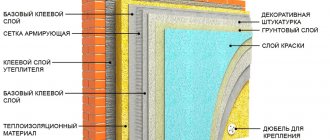The most common way to provide thermal energy to apartment buildings is central heating. The coolant is supplied through heating mains from central boiler houses or thermal power plants. The heated liquid is received by the heating point . It performs primary heat metering, ensures supply regulation, and distributes it to consumers. There are other options for heating apartments. Among the most common: individual heating of an apartment building, heating of a separate apartment.
Each scheme has advantages and disadvantages; the choice of the most convenient one depends on a number of factors: the proximity of highways, their condition, the feasibility of using energy from remote boiler houses. In any case, the design of new communications and the reconstruction of old networks should include the development of mechanisms for regulating the supply of heat to apartment buildings. This is not so much a question of comfort as of saving energy resources.
Automation of the process of regulating the heat supply of MKD
The existing system of transportation and distribution of thermal energy is far from ideal. Its imperfection is especially acute during the off-season. It often happens that the weather outside is consistently warm, and the radiators stubbornly heat the already warm rooms. This situation is due to the fact that the only link in the chain of enterprises, communications and coolant supply devices that has the ability to influence the heat supply process is the boiler house or thermal power plant. But even they do not have the possibility of flexible regulation; they do not have mechanisms that allow them to instantly respond to weather changes.
The ideal option for regulating the heat supply in an apartment building would be a project in which, when implemented, it becomes possible to regulate the temperature of each room separately. This solution allows for individual metering of heat supply, which in turn allows residents not to pay for heat that simply escapes through open vents.
Individual metering of heat supply allows the consumer to independently regulate the amount of thermal energy consumed . This can be achieved by setting the temperature of rooms that are not in use lower, raising it as needed.
Heat supply can be regulated by turning off the taps on the radiators. In addition, you can entrust the regulation process to automation. Modern industry offers various devices that allow you to regulate the room temperature. The most common of them are radiator thermostats. These are devices consisting of a thermostatic head and a valve. The sensor measures the room temperature and controls the valve. Depending on the preliminary settings, the valve increases or decreases the flow of coolant, adjusting the heating level.
Thanks to the possibility of precise adjustment, this device allows you to regulate the microclimate inside the building, maintain a comfortable atmosphere, and save energy. There are different types of radiator thermostats. Most of them allow you to set the temperature value that the owner of the room wants to achieve. More complex models exist. Some of them allow you to set the temperature for different times of the day; for example, they can limit the heat supply during the day when there is no one in the apartment, and in the late afternoon they can warm the room to a comfortable level.
Why is it hot in the kitchen and freezing in the bedroom? Adjusting heating radiators in an apartment
In apartments or private houses, residents often encounter the phenomenon of uneven heating of heating radiators in different parts of the home. Such situations are typical in cases where the premises are connected to autonomous heating systems.
How to optimize the heating system (HC), stop overpaying and how installing a heat regulator for batteries will help - we will consider further.
ontakte
Odnoklassniki
For what reasons do citizens more often adjust the heat in their residential premises:
- There is living conditions in the house
- It is necessary to get rid of excess air in the batteries, to achieve effective heat transfer in the interior.
- Timely installation of regulators allows you to refrain from frequent ventilation when the air is overheated using open windows.
- Correctly selected heating regulators and their proper use will reduce the amount of payments for this service by a quarter.
Important! Installation of the CO regulator should be carried out before the start of the heating season. In the midst of frost, such a procedure will require turning off not only the heating in your own apartment, but also in the neighboring ones, which will create certain inconveniences.
Setting the return and supply temperatures in an apartment building
The installation of the heating system regulator will depend on its overall design . If the CO is installed individually for a specific room, the improvement process takes place due to the following factors:
- the system operates from an individual boiler ;
- a special three-way valve was installed ;
- The coolant is forcibly .
In general, for all COs, power regulation work will consist of installing a special valve on the battery itself.
With its help, you can not only regulate the heat level in the necessary rooms, but also eliminate the heating process altogether in those areas that are poorly used or do not function.
There are the following nuances in the process of adjusting the heat level:
- Central heating systems, which are installed in multi-storey buildings , are often based on coolants, where the supply occurs strictly vertically from top to bottom. In such houses, it is hot on the upper floors and cold on the lower floors, so it will not be possible to adjust the heating level accordingly.
- If houses use a single-pipe network , then heat from the central riser is supplied to each battery and returned back, which ensures uniform heat on all floors of the building. In such cases, it is easier to install heat control valves - the installation takes place on the supply pipe and the heat continues to spread evenly.
- For a two-pipe system, two risers are already installed - heat is supplied to the radiator and in the opposite direction, respectively, the adjustment valve can be installed in two places - on each of the radiators.
Types of Battery Control Valves
Modern technologies are far from standing still and make it possible to install a high-quality and reliable faucet , which will control the level of heat and heating. It is connected to the battery with special pipes, which does not take much time.
Based on the types of adjustment, I distinguish two types of valves :
- Conventional thermostats with direct action. Installed next to the radiator, it is a small cylinder, inside of which a siphon based on liquid or gas , which quickly and competently responds to any temperature changes. If the temperature of the battery rises, the liquid or gas in such a valve expands, causing pressure on valve stem , which will move and block the flow. Accordingly, if the temperature drops, the process will be reversed.
Photo 1. Diagram of the internal structure of the thermostat for the battery. The main parts of the mechanism are indicated.
- Thermostats based on electronic sensors. The principle of operation is similar to conventional regulators, only the settings differ - everything can be done not manually, but electronically - set the functions in advance, with a possible time delay and temperature control.
How to adjust heating radiators
The standard process for regulating the temperature of heating radiators consists of four stages - bleeding air, adjusting pressure, opening valves and pumping coolant.
- Bleeding air . Each radiator has a special valve, by opening which you can release excess air and steam that interferes with the heating of the battery. Within half an hour after this procedure, the required heating temperature must be reached.
- Pressure adjustment . To ensure that the pressure in the CO is distributed evenly, you can turn the shut-off valves of different batteries attached to the same heating boiler to different numbers of revolutions. This adjustment of the radiators will allow you to heat the room as quickly as possible.
- Opening valves . Installing special three-way valves on radiators will allow you to remove heat from unused rooms or limit heating, for example, while you are away from the apartment during the day. It is enough to simply close the valve completely or partially.
Photo 2. Three-way valve with thermostat, allowing you to easily adjust the temperature of the heating radiator.
- Coolant pumping. If the CO is forced, the coolant is pumped using control valves, with the help of which a certain amount of water is drained to give the heating radiator the opportunity to heat up.
Adjusting heating in a private house
In private homes, it is necessary to pay attention to heating systems even at the time of design ; you should select a high-quality boiler or other heating equipment.
You can regulate the heating in your home using special technical devices of two types:
- regulating - installed both in individual sections of the network and for the entire CO, they help control and regulate the pressure level in the system, increase or decrease it;
- controllers - various sensors and thermometers, with the help of which information is obtained about the pressure level and other parameters of the heating system and there is the possibility of adjusting them in one direction or another.
Heat regulation in individual heating systems
The concept of individual heat supply implies that the boiler room is located directly in the apartment building. For its placement, basements and ground floors are used, and modular boiler rooms are also used, which are placed on the roofs of buildings.
The implementation of individual heating of apartment buildings is quite an expensive project. It requires a significant investment, however, it provides an opportunity to save money. The length of the lines for individual heat supply is limited by the size of the building, which entails small heat losses during transportation. In addition, easy access to boiler room equipment allows you to more effectively regulate the heat supply to an apartment building.
A separate case of individual heat supply is the installation of autonomous heating in the apartments of an apartment building. For this purpose, boilers are used, most often gas boilers, which are an integral part of a closed heating system. This solution makes it easy to automate the process by using devices that can regulate the temperature of a single room.
Adjusting heating radiators in an apartment
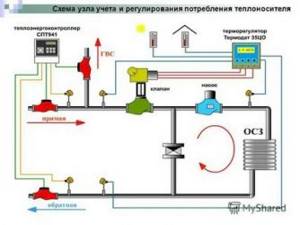
The choice of heating mode in a residential building or apartment often does not depend on the residents - if the heating devices are installed by builders, are powered by a common heat source and do not have adjustment controls. However, heat supply to apartment buildings is often carried out in strange modes, which forces apartment owners to change radiators, install control devices on them and arrange additional heating circuits. In this article we will understand what it is to adjust radiators in an apartment and how to do it correctly.
Conclusion
You can wait a long time for “mercies from nature,” that is, normal heat supply and its correct regulation on the part of utility services, and – alas – to no avail. Therefore, it is better to take matters into your own hands and adjust the heating radiators in your house or apartment yourself, in accordance with the proposed recommendations.
Source: https://stroy-okey.ru/house/pechi/regulirovka-batarej-otoplenija-v-kvartire/
Single-pipe heat supply option MKD
The simplest option for heating an apartment building is a single-pipe system. The coolant is supplied from the bottom up, it fills the radiators, gives off heat and moves to the next consumer. This system has a number of significant disadvantages. One of the main ones is significant heat loss during transportation. The last consumers in the chain receive a slightly heated liquid.
In addition, a single-pipe system makes it almost impossible to regulate the heat supply in an apartment building. It is not possible to install valves or automatic control devices on the supply pipelines, since a decrease in the flow rate within any of them will affect the entire system. You also need to remember about possible emergency situations. A single-pipe system does not allow the replacement of one of its components without completely draining the system. A minor breakdown can result in a stop in the heat supply to all consumers.
Adjusting heating in an apartment building
The choice of heating mode in a residential building or apartment often does not depend on the residents - if the heating devices are installed by builders, are powered by a common heat source and do not have adjustment controls. However, heat supply to apartment buildings is often carried out in strange modes, which forces apartment owners to change radiators, install control devices on them and arrange additional heating circuits. In this article we will understand what it is to adjust radiators in an apartment and how to do it correctly.
Features of heat transfer from radiators and ways to change it
When trying to regulate heating in an apartment building, you must first understand how the batteries are connected, how efficiently they give off heat, and what condition they are in. There are one- and two-way pipe connections. It is clear from the illustration that the one-sided option means connecting the inlet and outlet pipes on one side of the radiator, and the two-way option - on different sides.
The efficiency of heat transfer depends on where the supply and exhaust pipes are located. This is due to the greater density of the cold liquid (with a difference of 2...10 degrees, the difference is small, but fundamental) and its high specific gravity. Thus, the cooled coolant automatically drops to the lower part of the radiator. If the heated liquid is supplied from below, it is difficult for it to displace the cold liquid to the upper part of the heating device.
Heat supply and regulation with a two-pipe scheme
This option is more complex, but it allows you to significantly expand the capabilities of the mechanisms for regulating the heat supply to each consumer . The difference between the system is that the coolant that has given up part of the energy does not continue to move through the same pipe to the next consumer; it flows into the second pipe, the “return”. Thanks to this, the coolant has approximately the same temperature along the entire path, at each radiator.
It is this solution that makes it possible to regulate the heat supply in an apartment building using each individual radiator. You can regulate the temperature either manually using a valve or automatically using thermostats.
Regardless of how the heat supply is implemented, the system must include devices for automatic metering and regulation of heat supply in an apartment building. This makes it possible not only to provide housing with the heat necessary for life, but also to significantly save energy resources.
